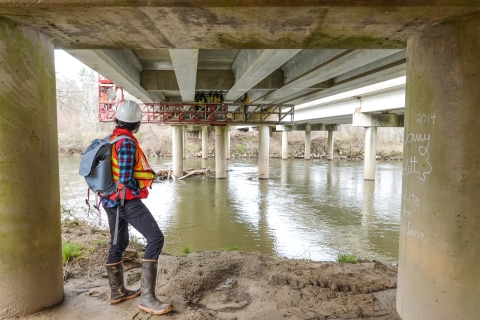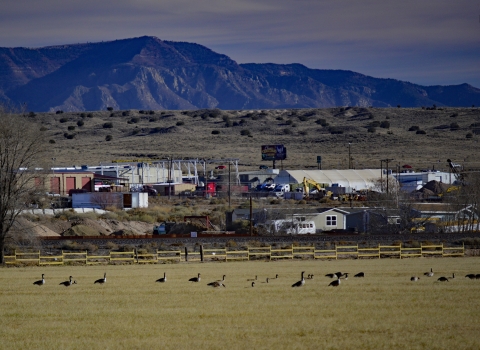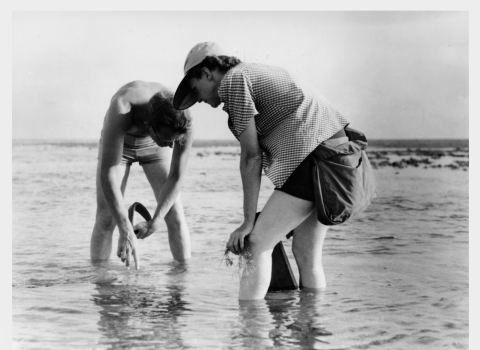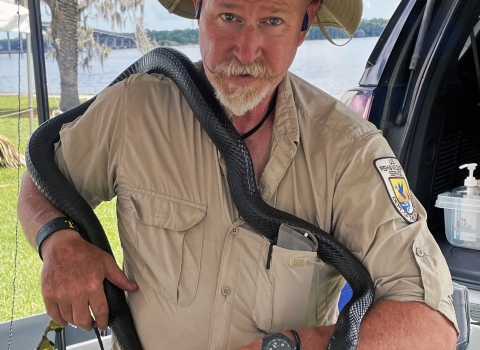Transportation agencies and entities in the United States manage and maintain more than 4.1 million miles of public roadways, more than 109,000 miles of railways, and more than 617,000 bridges. When conducted during the breeding season, the construction, operation, and maintenance of transportation infrastructure can result in the disturbance, abandonment, or destruction of in-use nests and subsequent death of viable eggs, chicks, or even adult birds.
How do transportation projects impact migratory birds?
Migratory birds and their nests can be purposefully or incidentally taken during construction, operation, or maintenance of roads, railroads, and light rail. Nesting substrate is often removed during ground-disturbing and vegetation-clearing activities for new construction. Take of adult birds can occur during vegetation maintenance, primarily unintentional injury or death of individuals as part of vegetation clearing (e.g., mowing, tree felling). Transportation lighting can increase the likelihood of collisions with buildings, bridges, other infrastructure, or vehicles.
Migratory birds and their nests can be taken during maintenance activities, particularly on bridges and other transportation structures that provide nesting habitat. Examples of bird species or nests that may be taken or disturbed during maintenance activities at bridges and culverts include swallows, osprey, phoebes, eagles, cormorants, or falcons.
Vehicle strikes associated with transportation activities are a significant risk to migratory birds in general. Loss et al. (2014) estimated that between 89 and 340 million birds die annually from vehicle collisions on U.S. roads.
What can I do to avoid and minimize impacts to birds?
Most opportunities for implementing measures for transportation activities is during the construction phase. The Service recommends that vegetation removal or maintenance and ground disturbance occur outside of the nesting season. Projects should ensure that nesting substrate remains clear to prevent re-nesting. The Service recognizes that the vegetation growing season frequently coincides with the breeding season for many bird species, and it may not be practicable to avoid causing some nest take in all circumstances. Projects should be designed in a manner that does not unnecessarily disturb migratory bird habitat during project implementation. Projects should also avoid destroying active nests and injuring migratory birds during demolition, repair, or cleaning. Shielded lights that are downcast can reduce the potential to attract birds. Implementation of a collision response strategy to identify, assess, and respond to activities that pose a high risk of collisions with migratory birds may help reduce impacts from collisions.
What if I discover an active nest on my project site?
If an active nest is detected, construction activities should not be conducted until nestlings have fledged or the nest is unoccupied. Vegetation removal activities may occur only if a buffer zone has been established around the nest and activities are restricted within that zone until the nest is no longer in use. It is permissible to remove non-active nests, partially completed nests, or new nests prior to occupation (i.e., before egg laying begins).
Library Documents:
If you would like to provide comments on the information presented on this webpage, please contact the USFWS Migratory Bird Program at MigratoryBirds@fws.gov.





